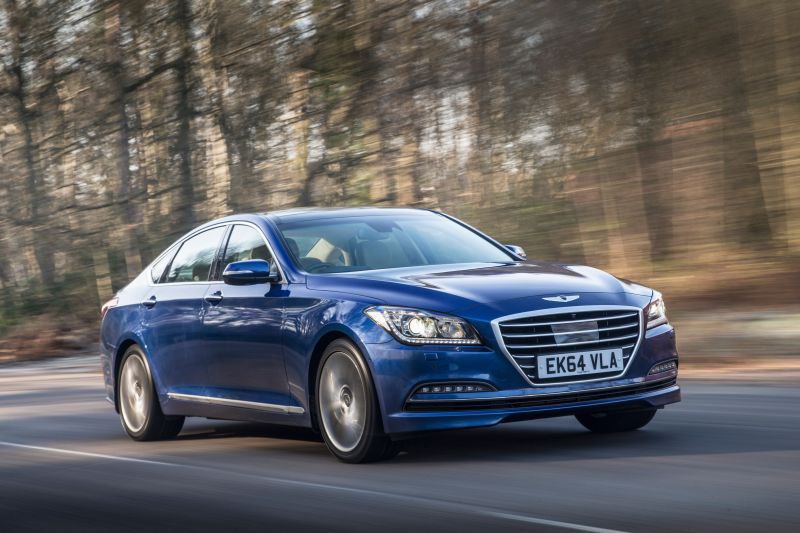Hyundai presented and manufactured Genesis as part of the brand’s portfolio from 2008 until 2016. It is an executive 4-door sedan, with 5 seats (including the driver), with a front-mounted engine and either an RWD or 4WD system.

© Hyundai Motor UK Ltd.
The first generation of Hyundai’s Genesis model marked the period between 2009 and 2014. It has begun with a preview of the concept showed at the 2008 North American International Motor Show. Unlike most of the brand’s models, this one was not marketed at the European car markets. Amongst the nits and grits, it offered were the rack-and-pinion steering that’s sensitive to speed, automatic dual-zone air conditioning (AC), leather seats and steering, heated front seats, plus a high-quality audio system as an option. Under the bonnet of the generation, Hyundai offered three different engines – a 3.3i V6 24V (262 hp), 3.8i V6 24V (290 hp) and more powerful 4.6i V8 (373 hp). Later on, a 4.6 l V8 with 385 hp was introduced to the model line, along with a 5.0 Tau with an estimated power generated between 424 and 429 hp. There are three variants for the transmission: a 6-speed Aisin, 6-speed ZF and an 8-speed automatic. The acceleration from 0 to 100 km/h is between 7.6 and 8.0 seconds, depending on the particular specs of the vehicle. The kerb weight varies from 1,700 up to 1,840 kg (3,748–4,057 lb), according to the equipment. The width of 1,890 mm (74.4 in) is the same through out the entire first generation. Length and height of the Genesis automobiles in the first BH gen also differ. The first parameter is between 4,985 mm (196.3 in) and 4,975 mm (195.9 in). The second one is either 1,475 mm (58.1 in) (2012–2014) or 1,480 mm (58.3 in) (2009–2011).

© Hyundai Motor UK Ltd.
A very special edition, R-Spec, joined the cars in the period 2011-2014. It was equipped with the 5.0 GDI engine along with a cluster of exterior and interior unique elements. Hyundai Genesis I includes sedan and coupe as the body type of the modifications. Genesis Coupe (2 doors and 2+2 seats) production marks the period between 2009 and 2012 with 4 modifications. It was later refreshed via 2012 facelift. The production of the coupes in the facelift version has started in 2012 and ended in 2013 – with a total of 6 modifications.

© Hyundai Motor UK Ltd.
Hyundai rolled out Genesis’ following II generation (DH), in 2015 up until 2016. The engines included are 3.3 L Lambda V6 GDI, 3.8 L Lambda V6 GDI, and 5.0 L tau GDI, coupled with 8-speed automatic transmission. Again, the position of the engine was front. The wheel drive systems available in the configuration are RWD and 4WD. The important size parameters are as follow: 3,010 mm (118.5 in) wheelbase, 4,990 mm (196.5 in) length, 1,890 mm (74.4 in) width and 1,480 mm (58.3 in). Depending on the equipment, the kerb weight varies in the diapason between 1,880–2,060 kg (4,145–4,542 lb). Hyundai Genesis II includes 2 modifications, both represent a sedan with 4 doors and 5 seats.
In 2017 Hyundai moved the model out of their product list and transferred it to their luxury subdivision – Genesis. Since then, the Hyundai Genesis is sold under a new nameplate – G80.